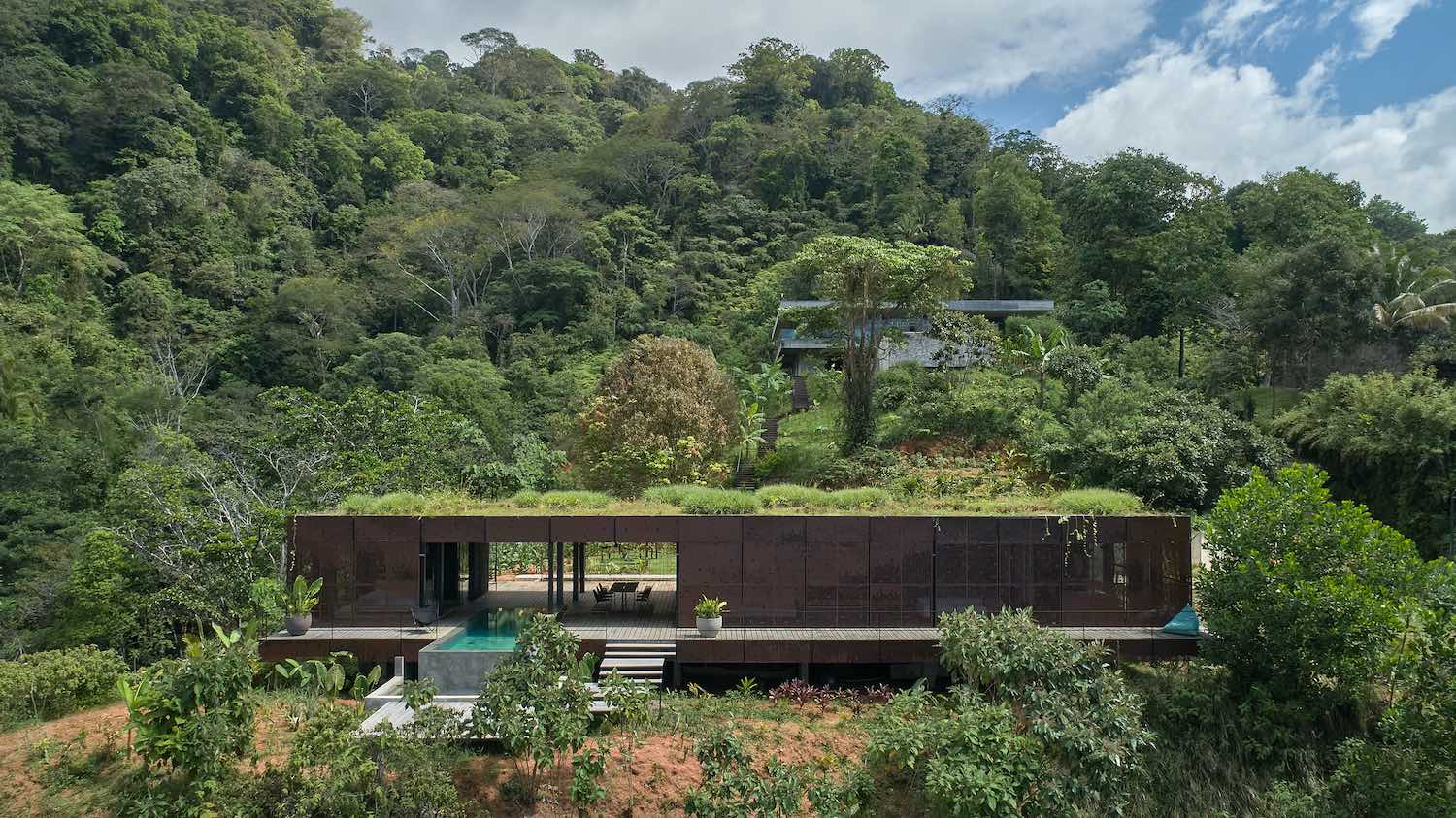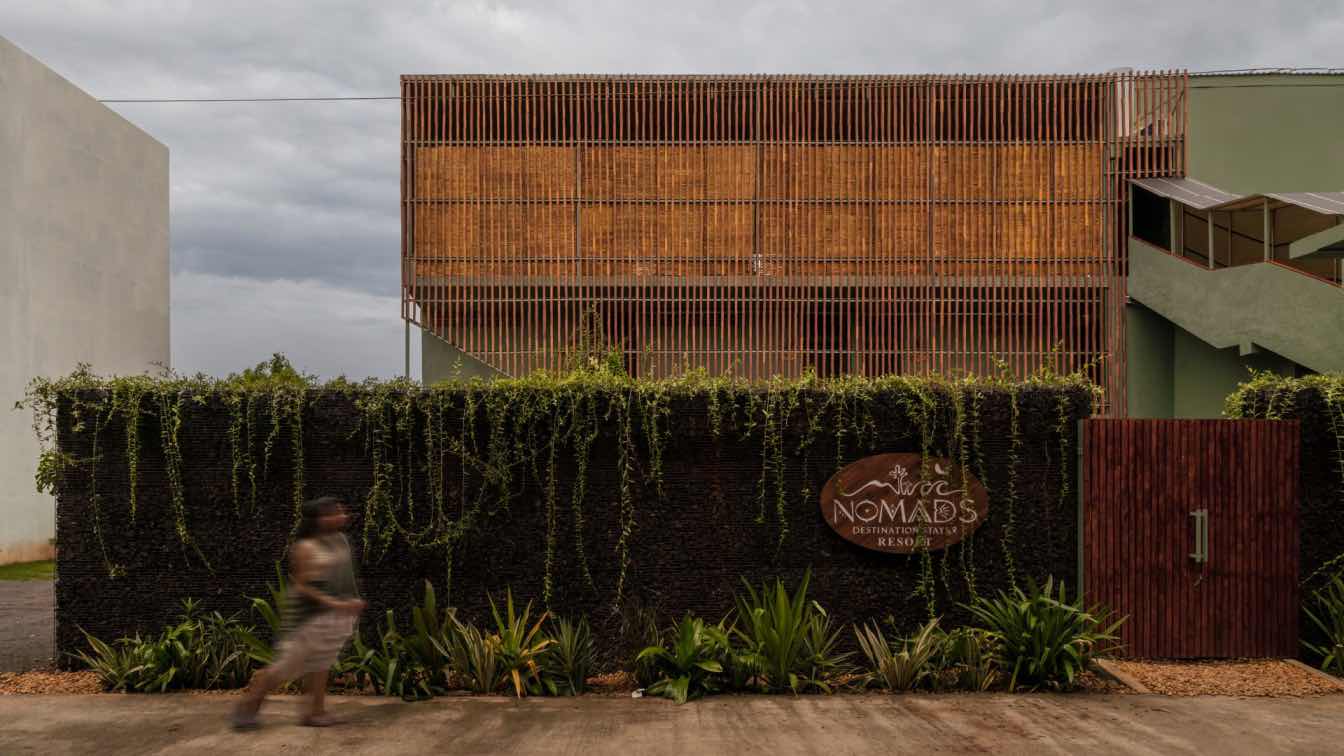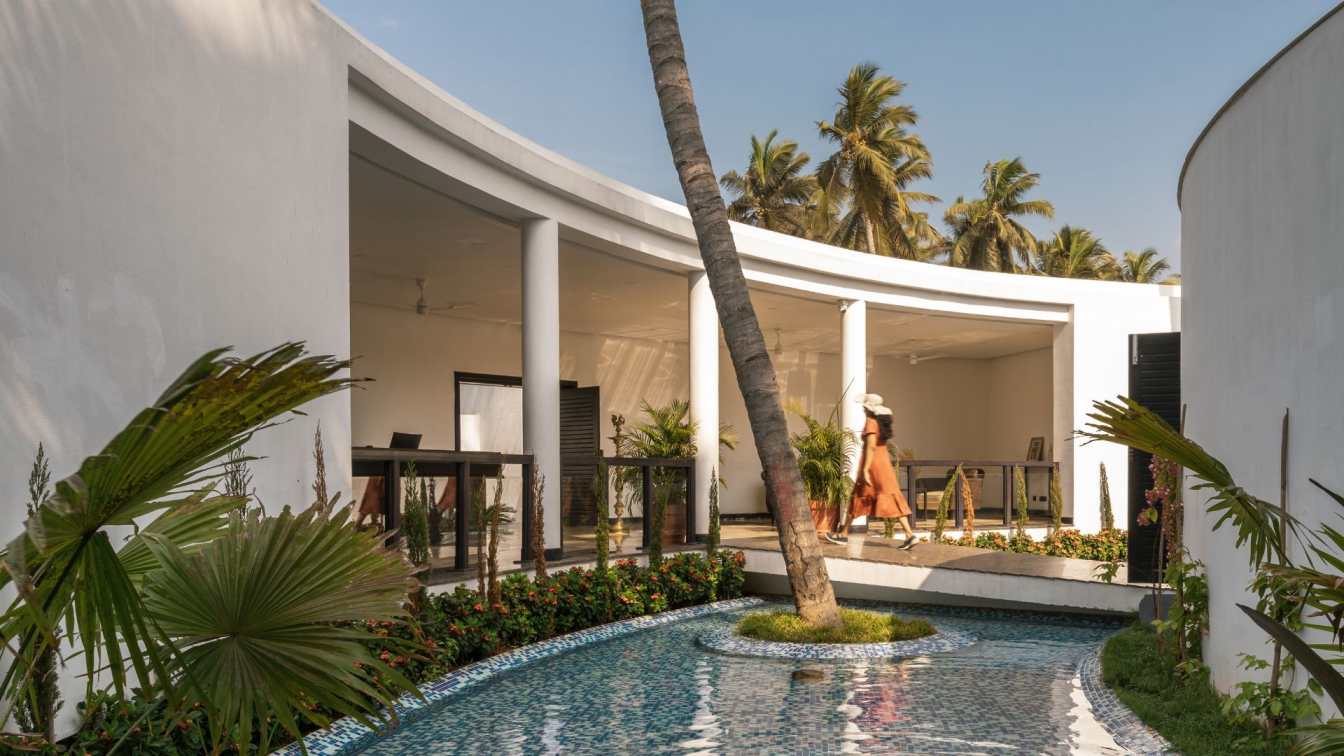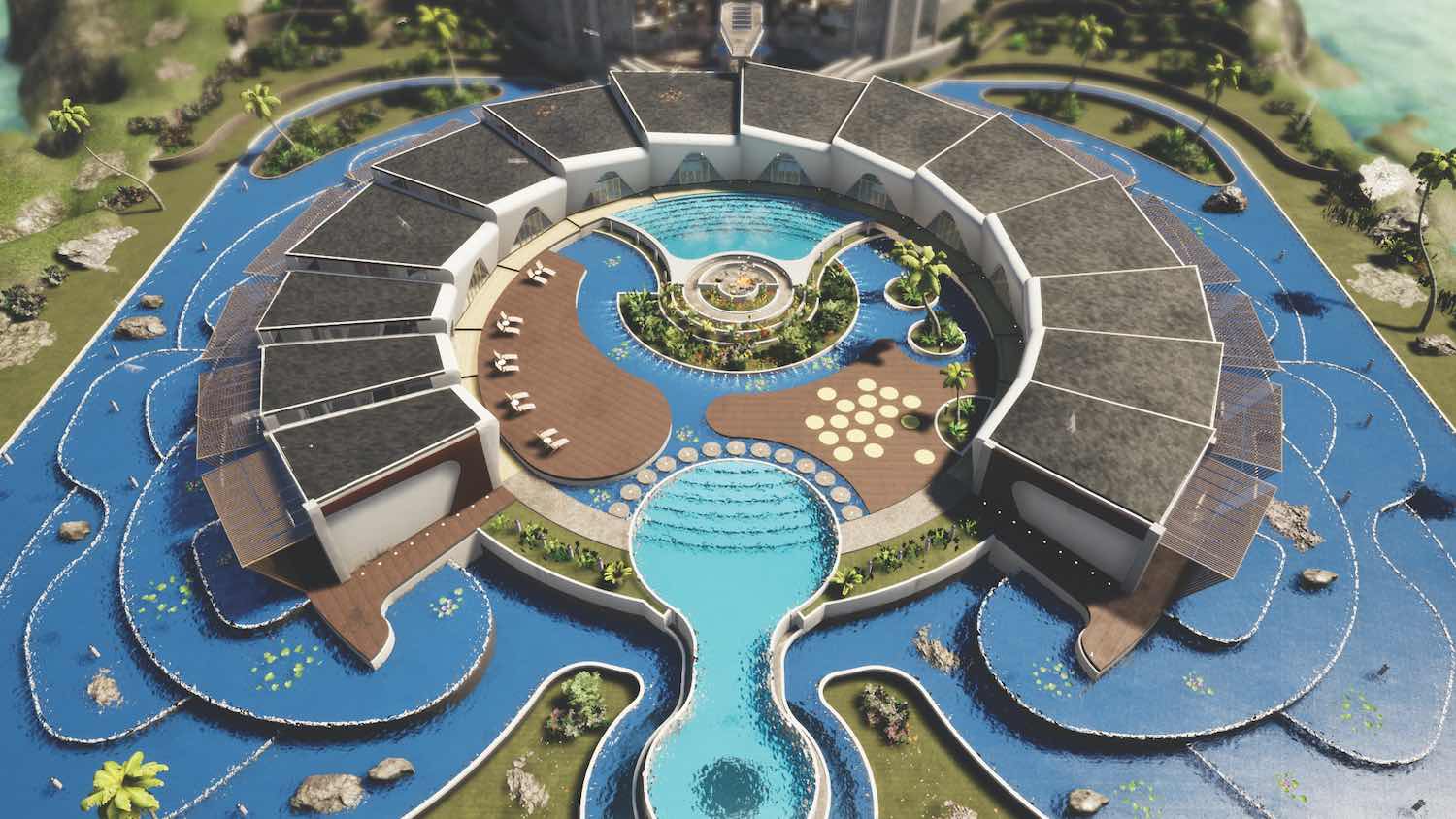Penda China: Located in West Dharma Village, Fangshan District, Beijing, In S&N Resort is favorably sited amidst mountains and trees. Legend has it that the twenty-eighth generation of Bodhidharma disciples of Shaolin Temple in Songshan traveled across the world. When passing through the Baihuashan area, they built temples, spread Buddhism, did good deeds, and cured illness of local people under the protection of Bodhidharma. To commemorate the virtues of Dharma, the mountain peak there is called Dharma Mountain and the village is so called West Dharma Village. Based on originally built residential cluster, the 1700 square-meter construction has been replanned and designed. A stream flows gently down the mountain passing through the middle of the site. Huge stones pillow in the river, rounded after years of scouring; many trees grow in the water. The surrounding context is natural and quiet, offering a hint of Zen and depicting a fictitious land of peace.
With highlighted keywords “wildness” and “luxury”, the design offers a place for people to escape urban routines and chill during holidays, returning their body and mind to nature. The new design is a two-story building, constructed in harmony with water. Each guest room can enjoy natural landscape, initiating a dialogue between man and nature. The overall planning and design echoes the surrounding village form and closely connects the architecture with the site context. The design, villages and surrounding natural environment are organically integrated.

Construction and materials
The overall architectural form fluctuates with the mountain’s ups and downs. The construction logic is a combination of different characteristics of southern and northern folk houses in China. Not far from the site is the famous residential settlement named “Cuan”, an iconic stone residential typology in north China. Therefore, a solid foundation of the building is made of brick and stone. Wood structure on the second floor is inspired by architectural structure of Naxi folk houses in a southern province, Yunnan. In a modern context, folk house typologies can be flexibly combined and grafted, breaking the boundary of time and space to form a new composition of folk house forms.
The design benefits from new composition in numerous ways. The solid stone structure at the bottom not only blocks moisture and stabilizes the foundation, but also organically integrates the building with site environment, giving the building a sense of growth. It fully embodies the concept of organic architecture. Stone building materials are selected around the site, and the construction is also manually built by local craftsmen. The building fully reflects regional characteristics and spirit of the site, forming unity and continuity with the context. The sloping roof echoes with traditional residential building forms, creating a subtle and calm ambience of the hotel. The two-story building adopts light and flexible wood structure, simultaneously constructing a natural and livable indoor space. The applying combination of wood and stone enriches the space with layers of pleasant qualities.

Programs and Activities
The hotel lobby and guestrooms, which are connected by bridge, face each other across the water, allowing guests to fully experience the attractive natural environment while stepping into the site. A total of 24 guestrooms are offered, including waterfront rooms and terraced rooms. The design maximizes the great views around the site and makes the building an integral part of the environment. Terraces are designed as platforms for guests to chat, drink tea and enjoy the beautiful scenery within a natural setting. The infinity pool in the hotel courtyard makes a perfect place for the hot summer. Inside the hotel, wide French windows in hotel rooms frame beautiful outdoor scenery, including the red bricks, blue water, and green mountains into a live painting. Some interior walls of the hotel are decorated with exposed stones, highlighting the uniqueness of the generous space, and creating a low-profile yet vibrant place. The elaborate design and placement of artworks inside the building reflect the taste of Oriental aesthetics. In such orderly spaces, people instantly become quiet and open-minded. At night, the lighting of the hotel building and that of the landscape corridor complement each other naturally, creating a pleasant holiday environment that makes people linger on. With babbling streams and beautiful mountain views, the hotel releases a peaceful, calming, comfortable and relaxing feeling from inside out, interpreting what is called extreme romance of wild luxury.

Landscape
The landscape design, giving due respect to the existing landscape, primarily centers on renovation and softening the environment so that travelers can enjoy the tranquil and peaceful nature. The plain hotel form is well integrated into the surrounding environment; the unrestrained and generous layout, complete leisure facilities, luxurious and comfortable accommodations relax both the body and mind. In S&N Resort is a perfect integration of the conflicting “wildness” and “luxury” and an expression of people's yearning for embracing nature. The high land level makes it a good place to watch the clouds, the sunrise, and the sunset, smell the flowers, listen to forest winds and see the stars. It is an ideal destination for one to rest, relax and seclude from the bustling and hustling of cities.
Trees in a stream running across the site make the natural landscape of the guestrooms and presents changing views in different seasons. In lush summer, it is a rare resort for hiking in the mountains along streams; in colorful autumn, flowers bloom as quietly as they fall in the courtyard; in white winter, the red plum blossoms are set off by the white snow, such a gorgeous sight. A place of pure nature is found in the remote and peaceful village.









































About
Founded in 2013 and led by Sun Dayong and Wan Shuyan, Penda China is a Beijing-based studio that embraces innovative design. With the international exposure it has gained, the studio is a stickler for ‘LESS IS LOVE’ from an ecological standpoint. We strives to establish an agreeable rapport between individuals and their surroundings while capturing the zeitgeist of art, fashion and architecture. Our multidisciplinary practice covers a wide spectrum from architecture, landscape to interiors, installation art and such, and a variety of functions including culture, residence, hotel, office, transportation, business, and exhibition. Our clients include BMW, MINI (CN), Volkswagen, Vanke, Qihao, China Merchants Property, Kaisa, Wanhua Real Estate and many other famous brands at home and abroad.
Our fashionable, green and innovative designs have garnered us many honours and extended actual influence within a worldwide scene. Hongkun Art Gallery (alternatively known as ‘Hongkun Museum of Fine Arts’), one of our projects, was selected to be one of the ten most popular art galleries in Beijing by Time Out. We were shortlisted four times as one of the most influential Chinese designers by the prestigious Architectural Digest AD100; won the Architizer A+ Award for Emerging Firm of the Year (2016); invited to be one of the ten architects to the 1st House Vision 2018 Beijing Exhibition curated by Kenya Hara; shortlisted for Dezeen Awards 2021 emerging architecture studio of the year. The studio founder was also invited to sit on the jury panel for the international competitions such as eVolo competition and Dezeen Award, making a voice internationally for Chinese architects; and elected to be Person of the Year and Architect of the Year by the renowned magazines TRENDS HOME, Robb Report Lifestyle, etc.
Penda China has won numerous awards at home and abroad. The founder Sun Dayong won the First Prize of the Excellent Graduation Design of graduates in School of Architecture, Central Academy of Fine Arts. Some representative award-winning projects are: Hongkun Art Gallery awarded the Outstanding Public Space of the Golden Bund Award (2014), Home Café awarded the Best Dining Space Design of JINTANG PRIZE (2015), Toby’s Home awarded the Best Leisure and Entertainment Space Design of JINTANG PRIZE (2015), Snow Apartment awarded the Best Residential Interior Design of Architizer A+ Awards (2015); Toby’s Home awarded the Gold Award of A' Design Award & Competition (2016); Rising Canes Pavilion awarded the Silver Award of A' Design Award & Competition (2016), Haikou Wenming East Road Tunnel awarded the World Design Awards (2021), gold award of Global Future Design Awards, The Plan Awards, and nominated for Iconic Awards and Wallpaper* Design Award (Best Infrastructure) etc.
Our design works have been included in numerous exhibitions at home and abroad, including the Start of a Long Journey Outstanding Works by Graduates of 2012 from Key Art Academies in China held in CAFA Art Museum; AIT International Young Architects Design Exchange Exhibition (2012); “ZAO – Architecture of China” in Lyons, France ( 2014); Architecture China 1000, Beijing, China (2015); “10×100 – An Exhibition of 100 Architects” on the 10th Anniversary of UED (2015); Rising Canes Pavilion in Beijing Design Week (2015); “Bi-City Biennale of Urbanism\Architecture” in Shenzhen, China (2015); “Walking Box” of Salone del Mobile (2016); Landscape City Reconstructing Utopia--Architecture and Art Exhibition in Shanghai Himalaya Art Museum (2016); MINI 60 Anniversary, Shanghai (2017); China House Vision, Beijing, China (2018); Urban Co-Habitation in SUPER FUSION 2021 Chengdu Biennale, etc.
Meanwhile, those projects have featured globally acclaimed media, such as Dezeen, Archdaily, Designboom, Domus, Frame, Interior Design, Gooood, Position, INTERIORS (South Korea), CASA (Japan), Wall Paper (UK), GQ, COSMOPOLITAN,, AD, Ideat, TRENDS HOME, Rayli Home, UED, AT, New Architecture, World Architecture Review, and World Architecture, etc.





